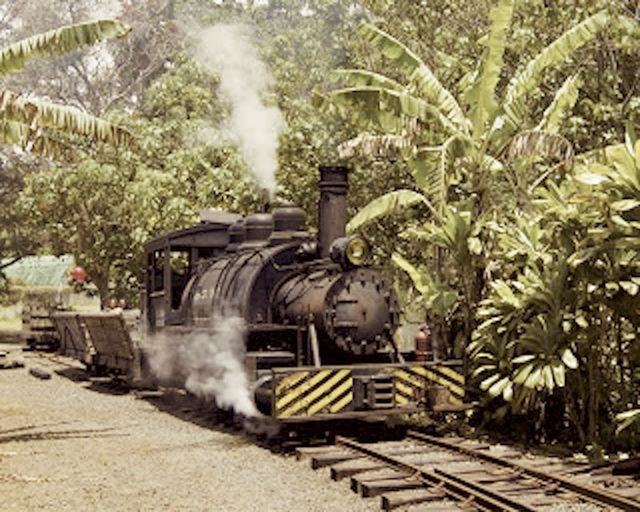On Sept. 24, 1881, Princess Liliuokalani drove the first spike into the first section of track of the first railroad to be built on Kauai at Kilauea Sugar Plantation.
Other Kauai plantations and railroad companies followed suit, using steam-powered locomotives to haul cane cars loaded with sugarcane to sugar mills for processing, and for transporting raw sugar and molasses to Kauai ports for off-island shipment.
Steam-powered locomotives would eventually be replaced on Kauai by diesel-powered locomotives, beginning at Kekaha Sugar Company in 1927.
And, in 1959, after Kauai’s last sugar train was hauled by diesel locomotive to the Lihue Mill, haul cane trucks completely superseded diesel-powered trains.
Meanwhile, the era of Kauai’s steam-powered sugar trains had ended on Sept. 24, 1957, the day Grove Farm Plantation train engineer Elisio Antonio, operating steam engine “Wainiha,” hauled its last load to the Lihue Mill.
However, the steam- powered train era was revived in 1975, when Grove Farm Museum founder, Mabel Wilcox, funded the restoration of “Wainiha” as a first step toward her goal of preserving Grove Farm Plantation’s railroad heritage.
Since then, Grove Farm Museum, under the direction of Robert Schleck, assisted by railroad engineer Scott Johnson and others, have carried forth Miss Wilcox’s wishes.
Steam engines “Kaipu” and “Paulo” have also been restored, property was acquired upon which 1,800 feet of track has been laid, and since 2004, the museum has provided authentic train rides to the public aboard cane cars hauled by steam-powered locomotives at Haleko Road across from the Lihue Mill site.
Alongside the track, beyond Haleko Road, remnants of two camp houses remain at Kalapaki Camp, originally constructed in 1880 for plantation laborers from the Gilbert Islands, while concrete columns of an old water tank stand nearby.
Further along, the track crosses a marvelously engineered, 29-foot high, double arch bridge built in 1908 of cut blue rock topped with uncut rock and fill dirt.
Filipino and Korean Camp, now vanished, was situated farther on.
Presently, Grove Farm Museum’s track ends about 60 feet short of Waa Road, with plans to extend it eastward in progress.





